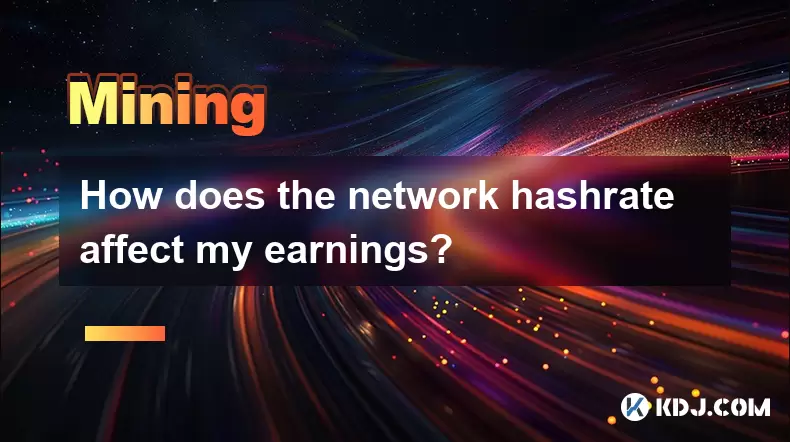-
 Bitcoin
Bitcoin $118,841.1054
1.02% -
 Ethereum
Ethereum $3,364.2689
7.44% -
 XRP
XRP $3.0337
3.93% -
 Tether USDt
Tether USDt $1.0004
0.04% -
 BNB
BNB $708.2059
2.49% -
 Solana
Solana $173.2385
5.74% -
 USDC
USDC $0.9999
-0.01% -
 Dogecoin
Dogecoin $0.2121
6.85% -
 TRON
TRON $0.3090
2.81% -
 Cardano
Cardano $0.7628
2.25% -
 Hyperliquid
Hyperliquid $46.8391
-2.08% -
 Stellar
Stellar $0.4537
0.15% -
 Sui
Sui $3.9529
-2.88% -
 Chainlink
Chainlink $16.6414
3.72% -
 Hedera
Hedera $0.2354
1.52% -
 Bitcoin Cash
Bitcoin Cash $499.1285
0.43% -
 Avalanche
Avalanche $22.6400
0.57% -
 Shiba Inu
Shiba Inu $0.0...01438
4.88% -
 UNUS SED LEO
UNUS SED LEO $8.8507
-0.64% -
 Toncoin
Toncoin $3.1498
2.35% -
 Litecoin
Litecoin $97.4954
1.21% -
 Polkadot
Polkadot $4.1541
1.50% -
 Monero
Monero $331.4406
-1.03% -
 Pepe
Pepe $0.0...01350
5.24% -
 Uniswap
Uniswap $8.9103
-5.01% -
 Bitget Token
Bitget Token $4.7540
4.51% -
 Dai
Dai $0.9999
-0.02% -
 Ethena USDe
Ethena USDe $1.0008
0.00% -
 Aave
Aave $322.3328
-1.63% -
 Bittensor
Bittensor $431.8026
-0.50%
How does the network hashrate affect my earnings?
Rising network hashrate increases mining competition, reducing individual earnings unless miners upgrade hardware or optimize efficiency to maintain profitability.
Jul 16, 2025 at 04:00 pm

Understanding the Relationship Between Network Hashrate and Earnings
When mining cryptocurrencies, network hashrate plays a crucial role in determining how much you can earn. The network hashrate refers to the total combined computational power used by all miners on a blockchain network to solve cryptographic puzzles. As this number increases or decreases, it directly impacts your individual earnings as a miner.
If the network hashrate rises, more miners are joining the network or existing miners are upgrading their hardware. This means that the competition for solving blocks becomes stiffer. Since block rewards are distributed based on the proportion of hashing power contributed, an increase in overall hashrate reduces your share of those rewards unless your own mining power also increases.
Conversely, if the network hashrate drops, fewer miners are active, which could be due to difficulty adjustments, hardware failures, or price drops discouraging mining activity. In such cases, your chances of earning a larger portion of the block reward improve, assuming your own hashrate remains constant.
How Mining Difficulty Adjusts with Network Hashrate
Cryptocurrencies like Bitcoin use a dynamic difficulty adjustment mechanism to ensure that new blocks are mined at consistent intervals — typically every 10 minutes. When the network hashrate increases, the time required to find a new block decreases. To counteract this, the network adjusts the mining difficulty upwards after a set number of blocks (every 2016 blocks for Bitcoin).
This adjustment ensures that even with a rising network hashrate, the average time between blocks remains stable. For individual miners, this means that without upgrading their hardware, their probability of successfully mining a block will decrease over time as difficulty increases alongside the network hashrate.
On the other hand, if the network hashrate falls, the next difficulty adjustment may lower the target hash value, making it easier for miners to find valid blocks. This situation temporarily boosts profitability for miners who remain active during periods of reduced competition.
The Impact on Pool Mining Rewards
Most miners join mining pools to increase their chances of earning steady income. In pool mining, rewards are distributed among participants based on their contributed hashrate relative to the total pool’s power. If the network hashrate rises significantly, but your mining rig's performance stays the same, your contribution percentage to the pool will shrink.
For example, if a mining pool controls 1% of the total network hashrate, and you contribute 1% of the pool's hashrate, then you effectively receive 0.01% of the total network rewards. As the network hashrate grows, maintaining the same share requires either increasing your personal mining power or switching to a more efficient mining setup.
Additionally, some pools implement different reward systems, such as Pay-per-Share (PPS), Proportional, or PPLNS (Pay Per Last N Shares). These models affect how your earnings are calculated and how sensitive they are to changes in the network hashrate.
Profitability Calculations and Estimations
To understand how network hashrate affects your earnings, many miners use profitability calculators. These tools require inputs such as:
- Your mining hardware's hashrate
- Power consumption in watts
- Electricity cost per kilowatt-hour
- Current network hashrate
- Block reward and coin price
As the network hashrate increases, the estimated daily earnings from mining will decrease unless there is a corresponding rise in cryptocurrency prices or a drop in electricity costs. It’s important to monitor real-time data from platforms like CoinWarz, WhatToMine, or CryptoCompare to adjust expectations accordingly.
Some miners track network hashrate trends using charts available on websites like Blockchain.com or BitInfoCharts. By analyzing these trends, miners can make informed decisions about when to scale operations up or down based on projected returns.
Strategies to Offset the Effects of Rising Network Hashrate
To maintain or increase earnings despite a growing network hashrate, miners often adopt several strategies:
- Upgrading hardware: Switching to more powerful ASICs or GPUs can boost your individual hashrate and restore your competitive edge.
- Optimizing power efficiency: Lowering energy costs through renewable sources or better cooling systems can help offset declining profit margins.
- Joining high-performance pools: Choosing a pool with low fees and good uptime ensures that your work contributes effectively to block rewards.
- Mining alternative coins: Some altcoins have lower network hashrates, offering better short-term profitability before difficulty adjusts upward.
These approaches allow miners to stay profitable even as the network hashrate climbs. However, it's essential to continuously evaluate the cost-benefit ratio of each strategy, especially since equipment upgrades come with upfront expenses and potential depreciation risks.
Frequently Asked Questions
- Does network hashrate impact solo mining more than pool mining?
Yes, because in solo mining, your chance of finding a block depends entirely on your share of the total **network hashrate**. With pool mining, the impact is diluted but still present in terms of reduced proportional rewards.
<li><strong>Can I predict future earnings based solely on current network hashrate?</strong><br>
No, because **network hashrate** fluctuates constantly, and other factors like block reward halvings, coin price volatility, and mining difficulty adjustments also influence earnings.</li>
Sudden increases often occur when the price of a cryptocurrency rises, attracting more miners, or when new, efficient mining hardware enters the market, boosting overall computational power.</li>
Profitable mining under rising **network hashrate** conditions is possible with efficient hardware, favorable electricity rates, and strategic pool selection. However, long-term sustainability depends on continuous optimization.</li>Disclaimer:info@kdj.com
The information provided is not trading advice. kdj.com does not assume any responsibility for any investments made based on the information provided in this article. Cryptocurrencies are highly volatile and it is highly recommended that you invest with caution after thorough research!
If you believe that the content used on this website infringes your copyright, please contact us immediately (info@kdj.com) and we will delete it promptly.
- Coinbase's 'Base App': Your All-in-One Crypto Hub?
- 2025-07-17 12:30:13
- Raydium, RAY Repurchase, and Circulation: A Solana Ecosystem Powerhouse
- 2025-07-17 12:30:13
- Bitcoin, Ethereum, Market Cap: Decoding the Crypto Buzz
- 2025-07-17 12:50:12
- Bitcoin Whale Wallets: Navigating the Tides of Crypto Fortunes
- 2025-07-17 13:00:12
- California Dreamin' Web3: Coinbase, Ripple, and the Golden State's Crypto Embrace
- 2025-07-17 10:30:12
- Navigating the Base Ecosystem: Investment Targets and Strategic Restructuring
- 2025-07-17 10:50:12
Related knowledge

How are crypto mining profits taxed?
Jul 14,2025 at 12:28am
Understanding Cryptocurrency Mining and TaxationCryptocurrency mining involves validating transactions on a blockchain network and earning rewards in ...

How to keep a mining rig cool
Jul 12,2025 at 01:42pm
Understanding the Importance of Cooling in Mining RigsCryptocurrency mining is an intensive process that places heavy demand on hardware components, p...

How to mine crypto on a gaming PC
Jul 16,2025 at 12:00pm
What is Crypto Mining on a Gaming PC?Crypto mining involves using your computer's processing power to validate transactions on a blockchain network. A...

How to set up a crypto miner
Jul 16,2025 at 09:14am
Understanding Ethereum Gas Fees: What Are They and How Do They Work?Ethereum gas fees are a fundamental aspect of the network, representing the cost r...

Can you mine crypto on a laptop?
Jul 16,2025 at 02:21am
Is It Feasible to Mine Cryptocurrency on a Laptop?Mining cryptocurrency on a laptop is technically possible, but feasibility depends heavily on the ha...

Is crypto mining worth it?
Jul 16,2025 at 01:21am
Understanding the Basics of Crypto MiningCrypto mining refers to the process of validating transactions on a blockchain network by solving complex mat...

How are crypto mining profits taxed?
Jul 14,2025 at 12:28am
Understanding Cryptocurrency Mining and TaxationCryptocurrency mining involves validating transactions on a blockchain network and earning rewards in ...

How to keep a mining rig cool
Jul 12,2025 at 01:42pm
Understanding the Importance of Cooling in Mining RigsCryptocurrency mining is an intensive process that places heavy demand on hardware components, p...

How to mine crypto on a gaming PC
Jul 16,2025 at 12:00pm
What is Crypto Mining on a Gaming PC?Crypto mining involves using your computer's processing power to validate transactions on a blockchain network. A...

How to set up a crypto miner
Jul 16,2025 at 09:14am
Understanding Ethereum Gas Fees: What Are They and How Do They Work?Ethereum gas fees are a fundamental aspect of the network, representing the cost r...

Can you mine crypto on a laptop?
Jul 16,2025 at 02:21am
Is It Feasible to Mine Cryptocurrency on a Laptop?Mining cryptocurrency on a laptop is technically possible, but feasibility depends heavily on the ha...

Is crypto mining worth it?
Jul 16,2025 at 01:21am
Understanding the Basics of Crypto MiningCrypto mining refers to the process of validating transactions on a blockchain network by solving complex mat...
See all articles

























































































